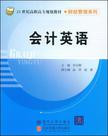会计英语
2009-1
清华大学出版社有限公司
李宗顺 编
225
无
为适应高职高专特殊用途英语教学的需要,我们编写了这本会计人员用英语交流为主要内容的教材,供高职高专院校公共英语学习阶段之后的会计专业英语课程使用。本书编写工作所贯穿的原则是:在加强英语语言基础和提高基本技能的同时,重视培养学生实际使用英语进行交际的能力。教材中既有会计理论的学习(如会计准则、会计账户、会计簿记等),又有各种会计报表,情景基本反映公司会计的主要业务,具有较强的实务操作性。 本书第1章为会计概述,第2章为会计假设和会计原则,第3章为会计要素,第4章为账户,第5章为借贷记账法,第6章为经济业务与会计等式,第7章为会计凭证,第8章为会计账簿,第9章为会计循环,第10章为基本财务报表,第11章为财务报表分析,第12章为会计法,第13章为管理会计知识,第14章为审计知识,第15章为税务会计。前11章为必学内容,后4章为选学内容,可根据每个学校教学进度不同选学,或布置学生自学,便于教师安排授课计划。 本书由李宗顺任主编,高萍、赵燕任副主编。李宗顺负责后7章内容的编写和全书文稿的整理、统稿及词汇的审定编写,高萍负责1、2、3、4章的编写,赵燕负责5、6、7、8章的编写。山东经贸职业学院会计系王春萍老师对本书会计专业知识进行了审核,会计系主任侯君邦给予了大力支持,我们谨表示衷心的感谢。 由于编者水平有限,书中难免有差错,我们殷切期望同行和使用教材的师生对本书提出宝贵意见。
本书是为高职高专会计类专业学生学习专业英语而编写的。在内容的编排上由浅人深,文章难度适中,既有会计理论的学习,又有各种会计报表,情景基本反映公司会计的主要业务,具有较强的实务操作性。 根据教学需要,本书共编写15章,课文涉及会计概述、会计假设和会计原则、会计要素、会计帐户、借贷记账法、经济业务与会计等式、会计凭证、会计账簿、会计循环、基本财务报表、财务报表分析、会计法、管理会计知识、审计知识、税务会计等。 本书适合高职高专会计类专业在校生使用,又可以供会计专业人员学习参考。
Chapter 1 Introduction to Accounting Section I 1.1 Definition of Accounting 1.2 The Importance of Accounting Information Section II Reading Material The Development of Accounting Chapter 2 Accounting Assumptions and Principles Section I 2.1 Accounting Assumptions 2.2 Accounting Principles Section II Reading Material GAAP and SAP Accrual Principle and Conservatism PrincipleChapter 3 Accounting Elements Section I 3.1 Assets, Liabilities and Owner's Equity 3.2 Revenue, Expense and Net Earning Section II Reading Material Marketable Securities, Inventory and Fixed AssetsChapter 4 Accounts Section I 4.1 Definition of Accounts 4.2 Account Types Section II Reading Material Chart of Accounts(会计科目表,账户一览表) Subaccount (子账户)Chapter 5 Debit-credit Bookkeeping Section I 5.1 Debit-credit Bookkeeping 5.2 The Rules of Debit and Credit Section II Reading Material Microcomputer Accounting SystemsChapter 6 Business Transactions and Accounting Equation Section I 6.1 Business Transactions 6.2 Accounting Equation Section II Reading Material Forms of Business OrganizationChapter 7 Accounting Documents Section I 7.1 Source Documents 7.2 Vouchers Section II Reading Material The Trial BalanceChapter 8 Account Books Section I 8.1 Journal 8.2 Ledger……
GAAP There are general rules and concepts that govern the field of accounting. These general rules-referred to as basic accounting principles and guidelines —— form the groundwork on which more detailed, complicated, and legalistic accounting rules are based. The phrase "generally accepted accounting principles" (GAAP) consist of three important sets of rules:the basic accounting principles and guidelines;the detailed rules and standards issued by FASB and its predecessor the Accounting Principles Board (APB) ; and the generally accepted industry practices. If a company distributes its financial statements to the public, it is required to follow generally accepted accounting principles in the preparation of those statements. Furthermore, if a companys stock is publicly traded, federal law requires the companys financial statements be audited by independent public accountants. Both the companys management and the independent accountants must certify that the financial statements and the related notes to the financial statements have been prepared in accordance with GAAP. GAAP is exceedingly useful because it attempts to standardize and regulate accounting definitions, assumptions, and methods. Because of generally accepted accounting principles, we are able to assume that there is consistency from year to year in the methods used to prepare a companys fimancial statements. Although variations may exist, we can make reasonably confident conclusions when comparing one company to another, or comparing one companys financial statistics to the statistics for its industry. Over years the generally accepted accounting principles have become more complex because financial transactions have become more complex.

无